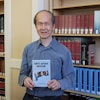Maybe if One L. Goh, the alleged shooter in the Oikos University rampage wore a hoodie, then we’d all know what we were dealing with.
That’s the power of a stereotype.
Instead, Goh, an Asian American immigrant, has another kind of stereotype working for him. But he’s certainly not the Model Minority.
Stereotypes aren’t really going to help us in the Oikos case. We’re going to have to rely on the news media to ferret out the truth.
Yet the national media attention of the Oikos tragedy hasn’t lasted very long. Nancy Grace isn’t even excited.
By comparison, the shooting of Trayvon Martin at the hands of George “Stand your ground” Zimmerman still attracts debate and discussion.
Oikos? Even in the Bay Area, people just shake their heads. What can you say?
Perhaps in America, six students and one administrator shot dead, with three others wounded has become a lot less shocking than it used to be. Just a little more than a week earlier across the Bay in San Francisco, another Asian immigrant bludgeoned five to death with a blunt instrument, not a gun (so much for blaming it all on the proliferation of guns).
At Oikos, the accused shooter, One L. Goh, allegedly used a single, legally purchased, .45 caliber handgun and four full rounds. There’s been barely a peep from gun control advocates.
It could be that the victims and the alleged perp are mostly from quiet immigrant communities lacking the desire or interest to express their outrage and grief in public. Where’s Sharpton? Where’s Jesse? Where’s “The Today Show”? Then again, maybe the quiet is a good thing.
Still, you’d expect more coverage than what you’re seeing, given the magnitude of the tragedy and the diversity lessons worth learning.
Connected to a Korean Christian church, the Oikos campus was but a single-story building with little more than 100 students, teachers, and employees. It was supposed to be a safehaven of sorts, especially for Korean Americans. They should have felt at home at Oikos.
But, according to reports, Goh felt teased and disrespected by some of his fellow students for the way he talked. That shouldn’t have happened at a place like Oikos. As a 43-year-old male in transition, there were generational and gender issues. The Alameda County District Attorney also revealed that Goh left school voluntarily last fall and had demanded his money back. The request was denied.
The anger Goh felt was enough for him to purchase a gun legally in February and then use it April 2, just two weeks shy of the fifth anniversary ate of the Virginia Tech shooting.
Goh probably wasn’t aware of the historic date. That shooting—the worst campus shooting in U.S. history—claimed the lives of 28 students and five teachers.
Goh did have a few things in common with the Virginia Tech shooter, Seung-Hui Cho.
Like Cho, Goh once lived in Virginia where he left a trail of credit card debt and back rent owed. He also had a relatively small federal tax lien of about $2,300. He was struggling financially.
Guns were the weapon of choice for both, though Goh appears to have had a single gun and was not armed to the hilt like Cho.
Then the similarities diverge.
Cho had a documented history of mental health issues and was a young 23. Goh, on the other hand, seems to have been suffering more from external matters, the hard knocks of life, and may have been despondent over his financial woes and the recent death of his brother, a staff sergeant in the Army.
At 43, Goh was middle-aged and much more traditionally Korean than Cho. To most members of Goh’s generation, mental health services aren’t an option. You hold it in; you cope until you can’t take it any longer. Depression? A sign of weakness. And you don’t seek out help or talk about anything in public. If only Goh knew to seek help, or had someone to turn to, then perhaps maybe the Oikos shootings could have been avoided. Culturally sensitive health care options aren’t always available, especially when it comes to mental health (another reason to back Obama’s Affordable Care Act).
And those in need of care like Goh are rarely recognized as needing help at all. Is there any question now?
What may be at play is that, when most people think Asian American, they think of the “Model Minority” stereotype, a label from the Reagan era that renders Asian Americans as so hard-working and perfect that they don’t need any help or attention.
Indeed, why can’t all people of color be just like us? Asian Americans doing double duty as conservatives’ passive social policy.
Well, we aren’t all math whizzes, spelling bee champs, and science fair gurus. It’s just convenient to think we are all self-reliant genius-level boy and girl wonders.
Taken as a whole, more often than not, we’re just barely scraping by, just like One Goh. We hurt. We’re misunderstood. We’re ignored. We come in to the U.S. third world. We find ourselves somewhere around two-and-a-half.
But if we recognize when help is needed, maybe the next tragedy can be averted.
Emil Guillermo is an award-winning author and journalist in Northern California. He writes for the Asian American Legal Defense and Education Fund www.aaldef.org/blog and at www.amok.com.















